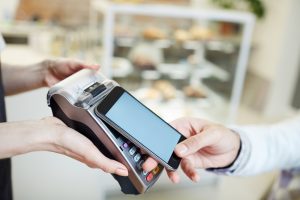In today’s fast-paced retail landscape, staying competitive means embracing innovation. One of the most transformative shifts is the adoption of Handheld POS Canada devices in stores across the provinces. These pocket-sized point-of-sale terminals are doing more than just taking payments — they are fundamentally changing how retailers operate, engage customers, and optimize efficiency.
In this article, we’ll explore how handheld POS terminals are reshaping retail in Canada, the trends driving adoption, and what the future holds for retail technology in Canada.
The Rise of Handheld POS in Canada
Traditionally, retailers have relied on bulky, fixed point-of-sale systems anchored at the checkout counters. While those systems still play a role, the proliferation of wireless networks, mobile devices, and cloud connectivity has paved the way for portable alternatives. In Canada, the adoption of Handheld POS Canada devices has accelerated, especially in environments where mobility, flexibility, and customer experience matter most.
Canada’s retailers — from boutique clothing stores in Toronto to farm shops in Saskatchewan — are realizing the value of on-the-floor checkouts, line-busting, and inventory management from anywhere in the store. The handheld terminal becomes a mini cashier, scanner, and data terminal in one.
One prominent example is Square’s Handheld device, which combines payment acceptance and inventory management in a compact unit. Meanwhile, Canadian payment providers like Moneris have integrated mobile and smart terminal capabilities (e.g., Moneris Go) into their offerings to support flexible retail operations. The Canadian market is ripe for such transformations, and we are seeing real uptake in both small and larger retail chains.
Why Handheld POS Terminals Are Game Changers
Here are the key ways handheld POS terminals are revolutionizing retail in Canada:
1. Mobility and Line Busting
One of the immediate benefits of a Handheld POS Canada device is mobility. Instead of making customers queue at a fixed till, staff can walk the floor, ring up purchases on the spot, and reduce wait times. This is especially powerful during peak hours or in stores where space is constrained.
2. Lower Hardware Overhead & Scalability
Fixed POS setups often require cash drawers, printers, wired connections, and terminal installations. Handheld POS units dramatically reduce the hardware bottlenecks. Retailers can deploy additional devices as needed without major renovations. As business grows, adding handheld units is far more cost-effective than adding full POS stations.
3. Real-Time Inventory & Data Integration
A modern handheld terminal isn’t just a payment device. It connects to back-end systems to update inventory in real time, push data to CRM or ERP modules, and give managers insights while on the floor. This seamless integration elevates retail technology in Canada by merging front-end sales and back-office intelligence.
4. Enhanced Customer Experience
Customers expect convenience and speed. Handheld POS enables staff to assist, suggest upsells, or finalize purchases directly beside products rather than sending the customer to a fixed register. This more personalized interaction fosters loyalty and can increase conversion rates.
5. Adaptability to Omni-Channel Models
Retailers in Canada are increasingly adopting omnichannel models — merging in-store, online, and mobile experiences. Handheld POS devices support this evolution by linking transactions from any location with the retailer’s broader systems, enabling unified order fulfillment, click-and-collect, or endless-aisle features.
Current Trends & Drivers in POS System Trends
As handheld POS adoption rises, it’s part of broader POS system trends sweeping the retail world, including Canada. Some of these trends include:
-
Integration with AI and analytics: Retailers are embedding AI to analyze transaction and foot-traffic data streamed from portable devices, enabling dynamic promotions, staff optimization, and predictive stocking.
-
Cloud and SaaS models: The shift from on-premises POS software to cloud-based platforms has made deploying handheld units easier and more affordable.
-
Security & compliance emphasis: With portability comes the need for stronger encryption, tokenization, and compliance with PCI standards. Retailers are investing accordingly.
-
Hardware convergence: Modern terminals combine multiple capabilities—scanning, camera, printer, contactless payments—into one device.
-
Retail as experience: Stores are becoming showrooms or experience centers. Handheld POS helps convert browsing into immediate sales anywhere in the store ecosystem.
These POS system trends are reinforcing the momentum behind handheld units, especially in markets like Canada, where digital payments and mobile adoption are strong.
Use Cases & Canadian Examples
Let’s look at a few practical scenarios where handheld POS devices shine in Canadian retail:
Flagship Apparel Stores
In large clothing stores in Vancouver or Montreal, a sales associate can carry a handheld terminal, scan items, check available sizes or colors, and complete the sale right beside the customer. This reduces lost sales when customers abandon their carts at checkout due to long lines.
Outdoor and Pop-Up Retail
At summer festivals, markets, or seasonal pop-up shops (e.g., Christmas markets in Toronto), handheld POS devices make checkout possible without wired infrastructure.
Home Delivery /In-store Pickup
For click-and-collect or ship-from-store models, staff can finalize payments in the loading zone or outside the store using mobile terminals.
Assistive Service in Large Stores
In big-box or department stores, if a customer finds an item in an aisle, staff can verify it, ring it up, and process payment anywhere. No need to walk to a central register.
Challenges & Considerations
Despite the clear benefits, there are a few challenges retailers must consider when deploying handheld POS terminals in Canada:
1. Connectivity & Coverage
Handheld devices rely on Wi-Fi or cellular networks. In areas with spotty connectivity, performance may suffer. Retailers should ensure robust in-store networks or fallback offline modes.
2. Security & Compliance
As noted, portable devices must meet stringent security standards. Retailers must ensure encryption, PCI compliance, and secure device management.
3. Training & Change Management
Staff need training to use handheld systems effectively. Adjusting workflows from fixed registers to roaming sales can take time.
4. Battery Life & Durability
A handheld unit must last a full shift and endure bumps or drops. Retailers should choose devices tailored for durability.
5. Integration Complexity
While handheld devices promise seamless integration, real-world syncing with legacy systems (ERP, inventory, ordering) can be complex during rollout.
Retailers weighing these factors and planning carefully are often able to navigate these challenges successfully.
The Future: Where Handheld POS Is Headed in Canada
The revolution is still unfolding. Here’s what we expect to see in the near future in Canada:
-
Deeper AI & Personalization
Handheld devices will allow staff to instantly access customer profiles, preferences, and tailored suggestions at the point of sale. -
Augmented Reality Integration
Imagine a device that, when pointed at a product, overlays stock levels, recommendations, or cross-sell options while letting you process the sale on the spot. -
5G & Ultra-fast Connectivity
As 5G coverage expands, handheld POS throughput and reliability will improve, enabling richer media or streaming on the devices. -
IoT & Smart Shelves
Handheld terminals will connect with sensors and smart shelves that detect low stock, triggering automatic restock orders visible directly to staff in their handheld device. -
Further Convergence of in-store & eCommerce
Handheld POS will become part of a unified retail fabric — bridging physical and digital seamlessly so that whether a purchase occurs in store, online, or via mobile, it’s processed identically.
Canadian retailers who deploy handheld systems now will position themselves ahead of the curve, delivering faster, smarter, and more flexible customer experiences.
Conclusion
The rise of Handheld POS Canada devices is not just a fad — it’s a pivotal shift in how Canadian retail operates. From reducing lines to enabling true mobility, these terminals bring efficiency, better customer service, and real-time data to the sales floor. Coupled with trends in retail technology in Canada and evolving POS system trends, these devices are redefining the national retail landscape. Retailers who embrace this transformation will be better equipped to compete, adapt, and thrive in an increasingly digital marketplace.
FAQ’s
Q1. What is a handheld POS terminal?
A: A handheld POS terminal is a portable point-of-sale device that combines payment acceptance, barcode scanning, and connectivity — enabling mobile checkouts anywhere in-store.
Q2. How does a mobile POS improve retail operations?
A: A mobile POS speeds checkout, reduces queues, enables on-floor sales, updates inventory in real time, and grants staff flexibility to assist and convert customers anywhere.





